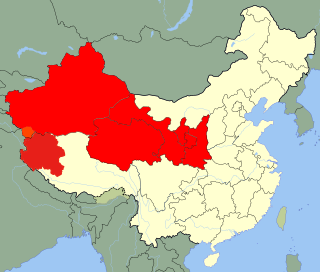
The Turkish Land Forces, or Turkish Army, is the main branch of the Turkish Armed Forces responsible for land-based military operations. Official sources trace the army's foundation to Modu Chanyu of the Xiongnu Empire in 209 BC, but the modern history of the army began with its formation after the collapse of the Ottoman Empire. Significant events since the foundation of the army include combat in the Korean War and in the 1974 Turkish invasion of Cyprus, and acting as a NATO bulwark along Cold War frontiers through 1992. The army holds the preeminent place within the armed forces. It is customary for the Chief of the General Staff of the Republic of Turkey to have been the Commander of the Turkish Land Forces prior to his appointment as Turkey's senior ranking officer. Alongside the other two armed services, the Turkish Army has frequently intervened in Turkish politics, which has now been regulated to an extent with the reform of the National Security Council. The current commander of the Turkish Land Forces is General Yaşar Güler.

The Lanzhou Military Region was one of seven military regions in the People's Republic of China. It directed all military and armed police forces in Xinjiang, Qinghai, Gansu, Ningxia, and Shaanxi. The Ali area of northwest Tibet also falls under this Region. It is headquartered in Lanzhou in Gansu Province. It is bordered to the south by the Chengdu Military Region, and to the north by Mongolia, the Altai Republic, which is a political subdivision of the Russian Federation, and Kazakhstan. This region is now part of the Western Theater Command due to the military reforms of 2015.
The 1st Army Corps was a formation in the Imperial Russian Army, formed in the 1870s. It took part in the Russo-Turkish War of 1877—78, and later, in August 1914, the 1st Army Corps fought as part of the Second Army in the Battle of Tannenberg. There, it was defeated by the Germans along with the rest of the Second Army. During the rest of World War I, it took part in other operations, up until around 1918.
The 1st Infantry Division was an infantry formation of the Russian Imperial Army that existed in various formations from 1811 until the end of World War I and the Russian Revolution. From at least 1903 to the end of its existence the division was based in Smolensk.
The 7th Infantry Division was an infantry formation of the Russian Imperial Army that existed in various formations from the early 19th century until the end of World War I and the Russian Revolution. The division was based in Radom and later Voronezh in the years leading up to 1914. It fought in World War I and was demobilized in 1918.
The 8th Infantry Division was an infantry formation of the Russian Imperial Army that existed in various formations from the early 19th century until the end of World War I and the Russian Revolution. The division was based in Warsaw in the years leading up to 1914. It fought in World War I and was demobilized in 1918.
The 10th Infantry Division was an infantry formation of the Russian Imperial Army that existed in various formations from the early 19th century until the end of World War I and the Russian Revolution. The division was based in Warsaw and later Nizhny Novgorod in the years leading up to 1914. It fought in World War I and was demobilized in 1918.
The 11th Infantry Division was an infantry formation of the Russian Imperial Army that existed in various formations from the early 19th century until the end of World War I and the Russian Revolution. The division was based in Lutsk in the years leading up to 1914. It fought in World War I and was demobilized in 1918.
The 12th Infantry Division was an infantry formation of the Russian Imperial Army that existed in various formations from the early 19th century until the end of World War I and the Russian Revolution. The division was based in Lutsk in the years leading up to 1914. It fought in World War I and was demobilized in 1918.
The 13th Infantry Division was an infantry formation of the Russian Imperial Army that existed in various formations from the early 19th century until the end of World War I and the Russian Revolution. The division was based in Sevastopol in the years leading up to 1914. It fought in World War I and was demobilized in 1918.
The 28th Infantry Division was an infantry formation of the Russian Imperial Army. It was part of the 20th Army Corps.
The 31st Infantry Division was an infantry formation of the Russian Imperial Army.
The 33rd Infantry Division was an infantry formation of the Russian Imperial Army. By the outbreak of World War I, it was part of the 21st Army Corps in the Kiev Military District. It was originally formed on 13 August 1863 by an order of the Minister of War that established 12 new infantry divisions. After the 1917 Russian Revolution and the declaration of independence by Ukraine, the 33rd Infantry Division became the basis for the formation of the Ukrainian People's Army 14th Infantry Division.
The 34th Infantry Division was an infantry formation of the Russian Imperial Army.
The 37th Infantry Division was an infantry formation of the Russian Imperial Army.
The 42nd Infantry Division was an infantry formation of the Russian Imperial Army.
The 45th Infantry Division was an infantry formation of the Russian Imperial Army.
The 50th Infantry Division was an infantry formation of the Russian Imperial Army.
The 79th Infantry Division was an infantry formation of the Russian Imperial Army.
The 80th Infantry Division was an infantry formation of the Russian Imperial Army.



